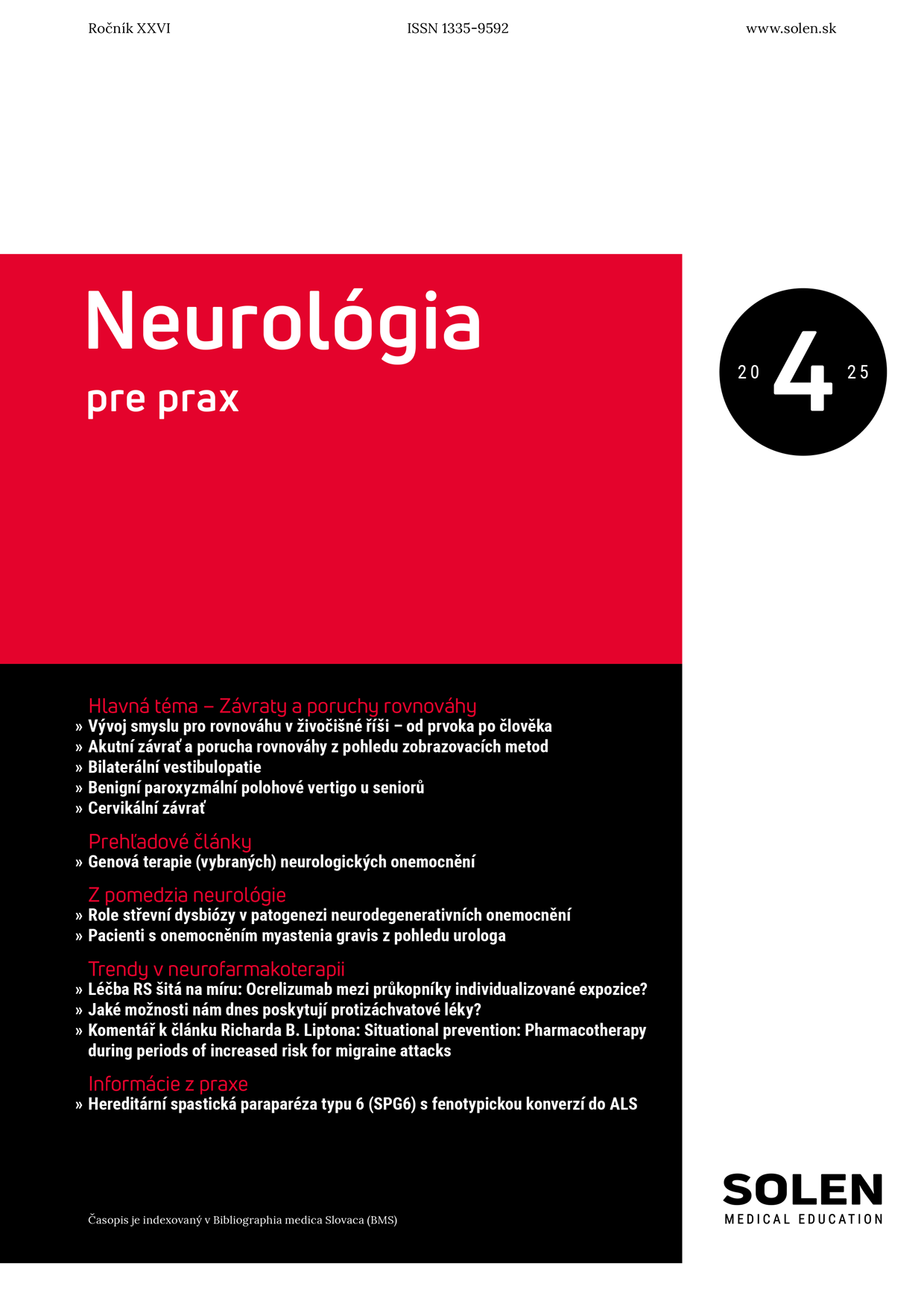Neurológia pre prax 3/2011
Therapeutic advances in hereditary muscular disorders
Treatment progress in hereditary neuromuscular disorders could be divided in two groups. Current multidisciplinary care and progress in gene and pathogetic oriented therapy. Multidisciplinary symptomatic care does not treat the principle of the disease, but it is very significant and improves the patient’s quality of life. Orthoses which can prolong the ambulatory stages, management of cardiac and pulmonary functions are considerable topics. Cardiac involvement is in some muscular dystrophies the prominent sign which can restrict the life length expectancy (Emery- Dreifuss muscular dystrophy, dystrophinopathy). To the symptomatic care belongs also the administration of corticosteroids in boys with Duchenne muscular dystrophy. Causative treatment in patients with Duchenne muscular dystrophy has many ways: gene therapy, cell therapy, and drug therapy. Gene therapy is focused to the transfer of the micro- dystrophin using viral vectors. The main problem of this way is the immune response of the human muscle tissue. The same problem is generated by local transfer of the myoblasts, mesangioblasts, and CD133+ cells. Drug therapy is dealing with upregulation of utrophin which can partially replace the dystrophin; BMN-195 compound was tested in healthy volunteers. Different possible therapeutic way are the inhibitors of myostatin: compounds which can influence the gene GDF-8: monoclonal antibodies ACE-031 and MYO-029, and compound ACVR2B. Mutation-specific approaches are the methods based on the correction of the genetic code, which allows the production of a partially functional dystrophin. Promising experimental results with PTC124 showed no functional improvement in human volunteers. The most promising results was reached with an „exon skipping“ therapy, which can restore the genetic code from Duchenne patients. A partially functional, Becker-like dystrophin protein can be produced instead of a non functional Duchenne protein. This is achieved by AONs (antisense oligonucleotides). AONs are small pieces of modified RNA. Different AONs are needed for each hot spot. Drug named PRO051 (AON for skipping of deleted exon 51) is currently tested and during 2010 multi centric international clinical study Phase III has been started. In patients with myotonic dystrophy type I the therapeutic strategies are focused on expanded RNA and its toxicity on intracellular processes.
Keywords: dystrophin, facioscapulohumeral dystrophy, gene therapy, myotonic dystrophy, Pompe disease, muscular dystrophy.

















